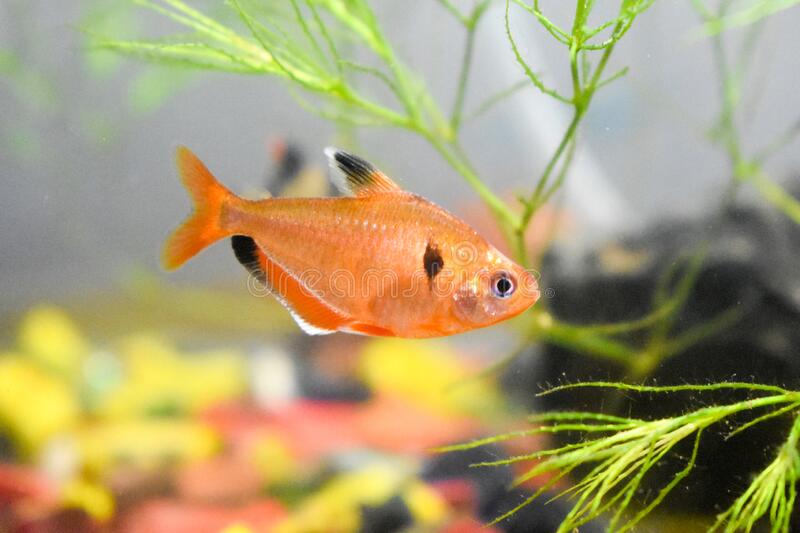ANIMAL: Serpae Tetra/Jewel Tetra Hyphessobrycon eques Type of Animal: Characin Habitat: Slow-moving backwaters, vegetated lakes, vegetated ponds, still/slow-moving vegetated streams, vegetated tributaries, plant-rich black rivers Location(s): N & C South America Appearance: Small red-bodied fish w/ black spot near gills, square-shaped dorsal fin, forked tail Food/Diet: Insects, insect larvae, worms, crustaceans, plant matter, snails Status in Wild: Stable Conservation: Breeding in aquaculture & aquariums Lifestyle: Schools of 6-60 fish Additional Info: Called: Male Female Young: Fry Group: School Weight: Male: 0.003 oz Female: 0.004 oz Gestation: 1-3 days Life Span: 3-7 years Body Length: Male: 1-1.2 in Female: 1.5-1.75 in Main predators are larger fish. Also called Red Minor Tetra, Callistus Tetra, Blood Tetra, & Blood Characin. They’re very active fish. These are great community fish. These fish very popular in aquarium trade due to beauty, coloration, & ease of care. Males become more colorful during spawning. They’re egg scatterers, w/ females scattering eggs over plants. Fairly peaceful fish but may nip at longer-finned fish species & will nip at each other when feeding. They often feed at surface but other than that spend much of their time in lower/middle areas of water column. When eggs hatch, newly hatched fry feed on yolk sacs until they become free-swimming. Male competition often results in better breeding. Sometimes school w/ other tetra species. Active during the day (diurnal). Females release 200-300 eggs per spawning. Spawning typically occurs early in the morning. Maturity reached at 8 months old. These fish are very easy to breed in captivity. These fish make great pets. Fun Fact(s): These fish are skilled jumpers, doing so if frightened. They’re somewhat related to piranhas. Hyphessobrycon means “little/small bites.” Like many tetras, they often swim jerkily. A long-finned variety was developed in captivity & does not occur in the wild.

